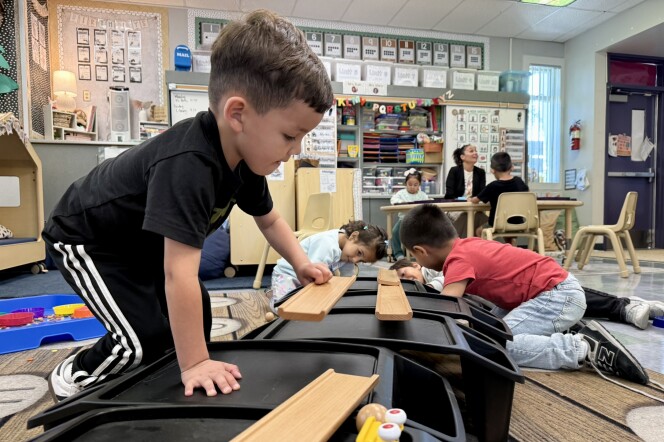With our free press under threat and federal funding for public media gone, your support matters more than ever. Help keep the LAist newsroom strong, become a monthly member or increase your support today.
Spirit: the little Mars rover that could, 10 years later
Ten years ago today, NASA launched the rover Spirit on a mission to find signs that life may have once existed on Mars. The robotic vehicle faced countless hardships that threatened to derail the mission, but somehow always persevered to make astounding discoveries.
Spirit began its journey in Gusev crater, a site NASA thought may have been an ancient lake. A few days into the mission, its computers failed and NASA lost communication with the rover.
"There were prognoses at the time that didn't look good at all," said NASA scientist Matt Golombek. "Some people thought we weren't going to recover and there was no way to recover."
But after several nail-biting days, the team managed to hack the rover back online. It was the first of many close calls Spirit would experience.
Then dust began to cover the rover's solar panels, keeping it from fully charging. Scientists always expected this would eventually end the mission.
But one night, a small storm called a dust devil wiped it away, allowing the Spirit to get nearly a full charge. NASA scientists knew these were common on Mars, but didn't know these small tornados of wind were that powerful.
"We lived to rove another day," remarked Arizona State University researcher Steve Ruff.
He said these dust cleaning events happened again and again to both Spirit and Opportunity, extending their life spans by years.
One of the rover's biggest scientific discoveries happened in a similarly accidental way. In 2006 the vehicle's right front wheel died. The engineers at NASA had to drive the rover backwards, dragging the immobile wheel like a "lame foot," said Ruff.
But while it was dragged along, the wheel acted like a plow, dredging up material just under Mars' dusty surface. That's how scientists discovered opaline silica on Mars.
On Earth, opaline silica forms in warm, wet places. Finding it on Mars meant the red planet was likely warm and wet once too. It was evidence that the planet may have once been a perfect habitat for microbial life, and it was just the sort of thing NASA scientists were hoping to find.
It was a "huge deal," Ruff recalled of the discovery. "It kind of put the exclamation point at the end of a mission that kind of lacked it until then."
Bethany Ehlmann, Assistant Professor of Planetary Science at Caltech, remembers Spirit as "the little rover that could."
"I think it says a lot about perseverance," she said of the story of Spirit. She praised the team behind the robot that managed to make big discoveries even when the odds were against them.
Spirit roved on a few more years after that, until 2009, when it got trapped in a sand pit. Hoping that the rover would beat the odds once more, NASA devised all sorts of plans to "free spirit." The organization even created a model of the crater and the rover to test escape maneuvers back on Earth.
Nothing worked. Spirit eventually ran out of power and stopped phoning home in March of 2010.
Spirit's twin, Opportunity is still roving Mars. It will celebrate 10 years since its launch on July 7th, 2013.










